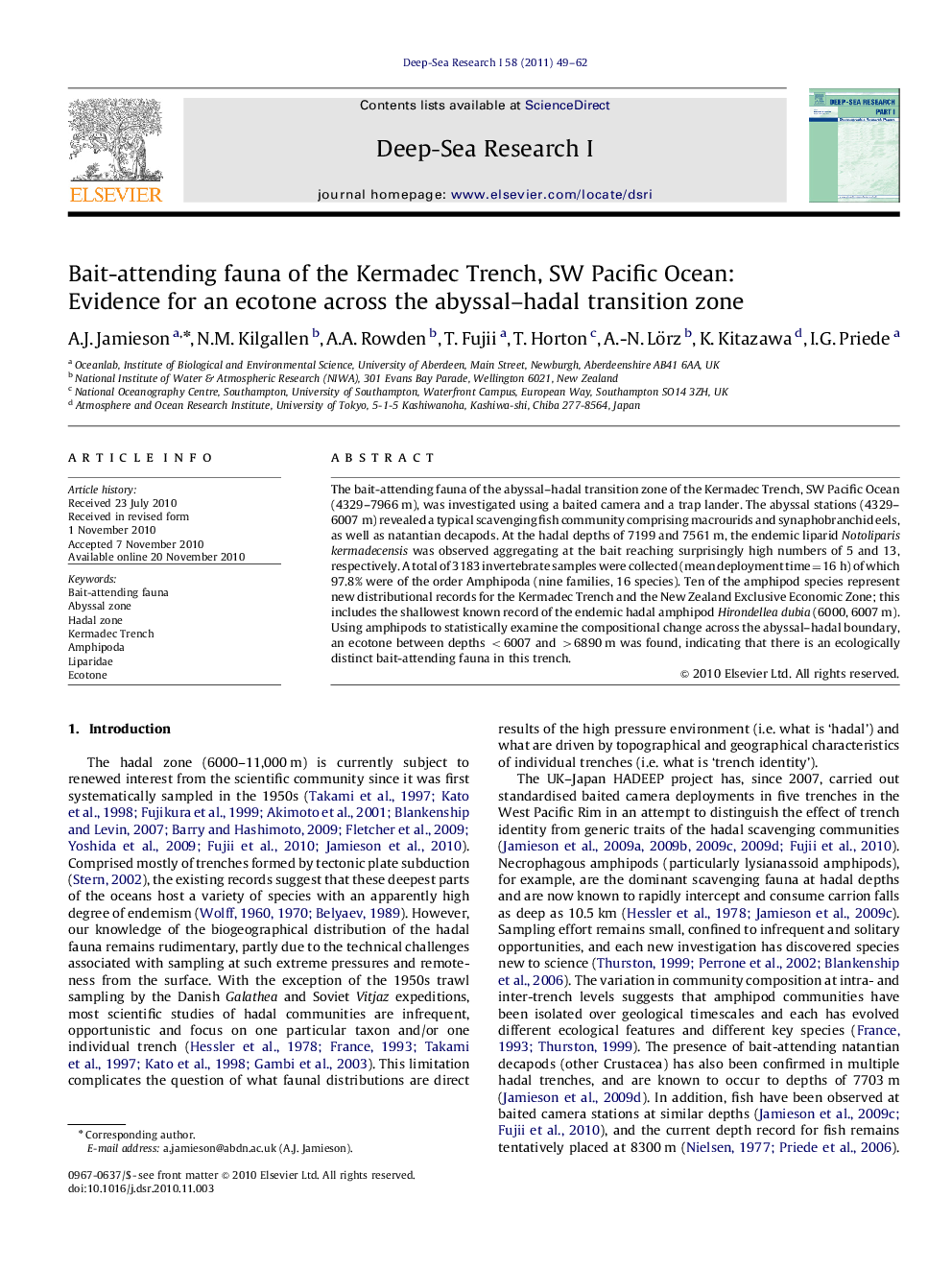| Article ID | Journal | Published Year | Pages | File Type |
|---|---|---|---|---|
| 4534940 | Deep Sea Research Part I: Oceanographic Research Papers | 2011 | 14 Pages |
The bait-attending fauna of the abyssal–hadal transition zone of the Kermadec Trench, SW Pacific Ocean (4329–7966 m), was investigated using a baited camera and a trap lander. The abyssal stations (4329–6007 m) revealed a typical scavenging fish community comprising macrourids and synaphobranchid eels, as well as natantian decapods. At the hadal depths of 7199 and 7561 m, the endemic liparid Notoliparis kermadecensis was observed aggregating at the bait reaching surprisingly high numbers of 5 and 13, respectively. A total of 3183 invertebrate samples were collected (mean deployment time=16 h) of which 97.8% were of the order Amphipoda (nine families, 16 species). Ten of the amphipod species represent new distributional records for the Kermadec Trench and the New Zealand Exclusive Economic Zone; this includes the shallowest known record of the endemic hadal amphipod Hirondellea dubia (6000, 6007 m). Using amphipods to statistically examine the compositional change across the abyssal–hadal boundary, an ecotone between depths <6007 and >6890 m was found, indicating that there is an ecologically distinct bait-attending fauna in this trench.
Research highlights► Baited camera and baited trap transect of hitherto unexplored depths off New Zealand (SW Pacific Ocean) – abyssal – hadal depths (4500–7500 m). ► First in situ observations of various new deep-sea species and new depth records of known species. ► Collection of scavenging amphipods (Crustacea) across the abyssal–hadal boundary. ► Evidence for an ecotone in scavenging fauna across the abyssal–hadal transition.
